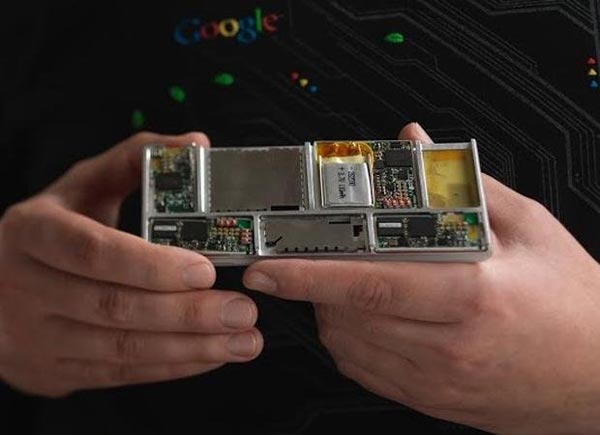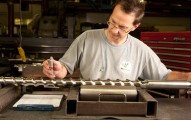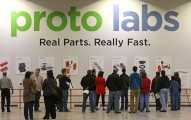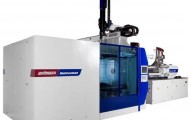Google moonshot Project Ara moves forward with additional DevCon and market pilot
After a successful second developer conference in January, Google is pushing forward with development on its modular smartphone concept, Project Ara.
Essentially, Project Ara is a smartphone platform that would allow users to upgrade or customize individual parts of the phone without having to purchase a new phone. So, you’d be able to upgrade your camera or processor by switching it out with a new module.
Google’s Advanced Technology & Projects (ATAP) group is leading the project, which was officially announced in late 2013, with its first developer conference announced in early 2014. The second developer conference for Ara took place in January 2015.
“In January, we had our second developers conference, put out the 0.2 release of the Ara Module Developers Kit (MDK), and showed the Spiral 2 prototype devices to our developer community,” said Paul Eremenko, Technical Project Lead for Project Ara. “Throughout 2015, we will continue to focus on building a vibrant developer ecosystem as we also mature the Ara platform and MDK.”
The biggest announcement for Project Ara, however, was that of a market pilot in Puerto Rico which will happen later this year in partnership with distributor Ingram Micro. OpenMobile and Claro will act as carrier partners for the pilot as well.
The goal of the pilot is market research and research on user behavior. Google will be addressing questions of price, marketing, fulfillment, and whether or not the ability to choose modules will be enjoyable or too stressful.
This pilot is especially important because it will be one of the deciding factors as to whether or not Google transitions Ara from an innovative experiment to public product. According to Google, Puerto Rico was chosen for a variety of reasons, which include:
Large, diverse base of mobile users
The majority of Puerto Ricans are mobile-first in accessing the internet
Diverse carrier landscape
Bilingual culture and free trade zones
Strong and supportive university system
Of course, all of this won’t be successful without a broad developer ecosystem. Google has already partnered with many major players around the world to work on the Ara platform, including Quanta, Toshiba, Linaro, and NK Labs.
Anil Rachakonda, who leads developer relations for Project Ara, said that developer interaction with Ara centers around the free module developers kit (MDK), which gives developers the specifications they need so they can build Ara modules without additional input from Google.
“The MDK describes the mechanical, design, environmental, electrical and logical interfaces and constraints for an Ara module, and provides reference implementations, linkages to industry standards and vendor recommendations where appropriate,” Rachakonda said.
Ara is often referred to, by Google and others, as an attempt to democratize hardware development. Paul Eremenko, head of Project Ara, likened it to the hardware version of Google’s open-source Android platform. While this is leading many folks to work on developing good cameras or processors, Rachakonda said developers are also working on modules for applications in areas such as medical, environmental, entertainment, gaming, and home automation.
Recently, many modules were on display at the 2015 Mobile World Congress in Barcelona. Yezz had its modules on display, which it is aiming to have ready for the pilot in Puerto Rico later this year. Modules will eventually be available through the Ara marketplace.
Richárd Nagy is not formally affiliated with Ara, but he is developing modules in his free time. Right now, he is working on developing a detachable beer opener, which he hopes will help him raise funds to work on a more “serious development” for Ara in the medical field.
Nagy said that the development process starts with Spiral, which is the hardware prototype of the endoskeleton. He said that Google does a lot to help new developers get started, especially when it comes to materials and components. Although, Nagy said sourcing certain materials such as Hiperco, an iron-cobalt-vanadium soft magnetic alloy used for the magnetic joints in the phone, can be overwhelming.
The physical shells that hold the electronic components of the modules are made with injection-molded polycarbonate plastic. The choice of manufacturing process was surprising to Nagy.
“The only thing I don’t like about the exterior shell is that the modules are not 3D-printed, but injection molded instead,” Nagy said. “This is something I feel that is not really fitting into the concept of the phone, because this process requires either a substantial amount of investment in machines, or outsourced production.”
Last year, Google partnered with 3D Systems to work on 3D printing parts of the phone, so the move to injection-molding is surprising. Google hasn’t formally moved away from 3D printing, and in the FAQ section of the Ara website it states that they are still moving in that direction.
However Google ends up manufacturing specific modules, Nagy is hopeful that projects like Ara will encourage more people, especially young people, to take an interest in hardware engineering and start working on the next world-changing technology project, perhaps as a part of an educational program.
“This will probably lead to an increase of youth, who will select hardware engineering as their profession, which in turn will lead to a more advanced, more high-tech world,” Nagy said.
Interested developers can download the MDK here, and apply for developer hardware here. According to Eremenko, Google expects to announce another developer event soon.










